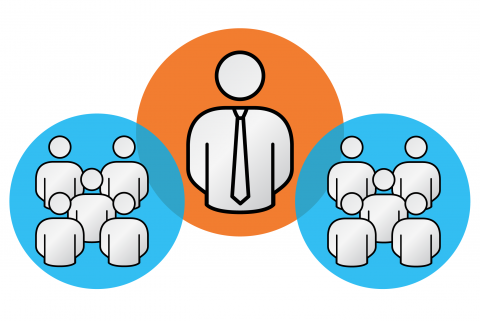An interview with John Michelsen, CTO of CA Technologies.
The Enterprisers Project (TEP): How has the role of the CTO changed over the years?
Michelsen: Historically, IT served an enabling function for businesses, providing communications channels, storage space, and streamlining activities. Consequently, the CTO was viewed the same way: an enabler who helped the business run and fixed problems as they arose, not as someone who was helping to drive the direction of the business.

As technology became critical to business, the role of the CTO began to quickly change. With the rise of SoMoClo [social/mobile/cloud], IT decisions became strategic and the CTO gained a seat at the C-suite table. However, this shift wasn't without growing pains: BYOD, rogue IT and security concerns presented challenges that CTOs are still trying to overcome — and frequently left the company feeling that IT was more of a roadblock than an enabler. This new strategic focus on technology led to huge expectations of the CTO, with a smaller budget and fewer resources.
Today, we're in the midst of one of the most dramatic changes in business and IT. Every company is now a software company. As companies adopt new technology, they need to embrace CTOs to help drive new, innovative services and make meaningful contributions to overall business growth.
TEP: How does the CTO role relate to the CIO role? It seems those lines are increasingly blurry. Is there a potential for turf conflict?
Michelsen: There is certainly the possibility that the CTO and CIO can compete for turf, but that is never going to be the most productive approach. Instead, they need to be strong partners in running the technology side of the business. For example, at CA Technologies I work hand-in-hand with our CIO, Paul Pronsati, as a partner in technology to plan, build, and run new applications, both internally and for our customers. We are both on the CEO's leadership team, we both have the same access and influence at that top level and together we provide technology vision and execution with a whole of business approach.
As organizations in all verticals start to see themselves more and more as technology companies, and the lines blur between the technology that staff uses and the technology that customers demand, this seems to be an increasingly popular model. When the CIO and CTO both have top-level access, and work together as partners, they can perform much better for the whole business. They can still have specialties — the CTO may focus more on a mid-to long-term technology and 'blue-sky' projects, while the CIO may focus more on service quality across internal systems with more immediate impact--but in the long run, it really should be a partnership of equals.
TEP: You mentioned that "every company is now a software company." How do companies need to evolve to adapt to this new reality? How can CTOs help?
Michelsen: Today, in the Application Economy, a business relationship with its customers is moving — sometimes entirely — from person-to-person to app-to-person. As a result of this shift, loyalty can be earned in minutes but lost in seconds when an application at the front end is the gateway to customers. Software quality, user experience, security and privacy, are all more critical than ever.
That means all companies that sell goods and services to us via apps are software companies. It's business being rewritten by software. And it means that how a company builds, delivers and operates its software is one of the most critical aspects of operating in a competitive way. A business can't be a second-rate software developer and still be a leader in its industry.
CTOs have a significant role to play in this. The CTO can map a path to modern technologies across the business, such as cloud computing or enterprise mobility. They can help their companies transform their development and operations capabilities to become more effective and agile. They can make sure the technologies in place today, and adopted tomorrow, are secure and compliant with regulations and policies. Companies that have this high-value technology leadership can bring software to market faster, with higher quality, and more securely. These will be the businesses that gain market share and bring in new revenue.
There are a few things CTOs should be doing to effect this type of change within their organization. First, they should adopt DevOps. DevOps is about integrating people, processes, tooling into one delivery to make the entire process faster and more effective. It's not enough to code quickly if it's not done well; DevOps leads to a fast, efficient and high-quality release of software.
CTOs should also champion a strategic approach to IT. Strategic overhauls can be expensive and intimidating, and it can be difficult for CTOs to convince senior management that adopting this new approach is worth the investment. But increasingly, failing to react to this industry shift leads to major impacts on business.
Finally, they should adopt an enterprise-wide approach to mobility. As companies increasingly interact with customers via mobile devices, making piecemeal investments in mobile no longer cuts it. Companies should take an enterprise-wide approach to mobility, integrating a mobile strategy into every product and solution, to see higher levels of consumer satisfaction and fast time-to-market for their mobility applications and services.
TEP: Can you tell us a little about your own role as CTO within CA?
Michelsen: Much of my role is working with the rest of the C-level leadership team on strategic technology. Across our business — and we have 14,000 employees across the globe — there is a diversity of technologies in use. We have adopted many consumer technologies such as tablets and cloud services, but also more enterprise technologies such as development tools and hosting services. So have our customers, and that is very important to me too. So as CTO, I am charged with looking at all these technologies, how we are using them, how our customers are using them. I need to ensure both the software we sell and the technologies we use are aligned with our strategy, and learn what we can do better in future, as well as search out brand new opportunities for CA to use technology as a strategic differentiator.
So, for example, I work with our CIO and our EVP of Products to scope out common architectures and tools for building and delivering better software products. I work with our CMO and COO to chart the best technologies for more satisfying customer engagements and more effective marketing automation; I work with our CFO and head of HR to make sure we are attracting, training, and retaining the best technical talent; and I work with all our business units GMs to provide technology insight that will help them serve their customers better. As a technology company we need to be a leading light in the technology space, so we need to do it right internally, and for our customers. But I cannot do it alone — it must be a partnership between me and my peers, and between my team and theirs too.
TEP: How do you see the CTO role continuing to evolve in an increasingly tech-driven future?
Michelsen: The role of the CTO is at an inflection point, and it's up to them to define their future. Technology has never been more critical to business, but the CTO voice is still muted in these discussions. The fact is most companies still have the perception that IT is only there to fix printers or passwords, not to help define the future of the company. And long wait times and restrictions on technology do nothing to change that view.
CTOs need to become more flexible, agile and forward-looking. They need to position themselves as technology advisors to their peers, a trusted and unbiased source of technology expertise. Suggesting a new service model for an upcoming marketing project, for example, will help shift the relationship with the CMO. CTOs need to think strategically about the direction of the business and anticipate what the business needs to grow--and how to help their colleagues do their jobs better.
Read John's article, "Skills gap? Hire flexible athletes, not single-position players."




